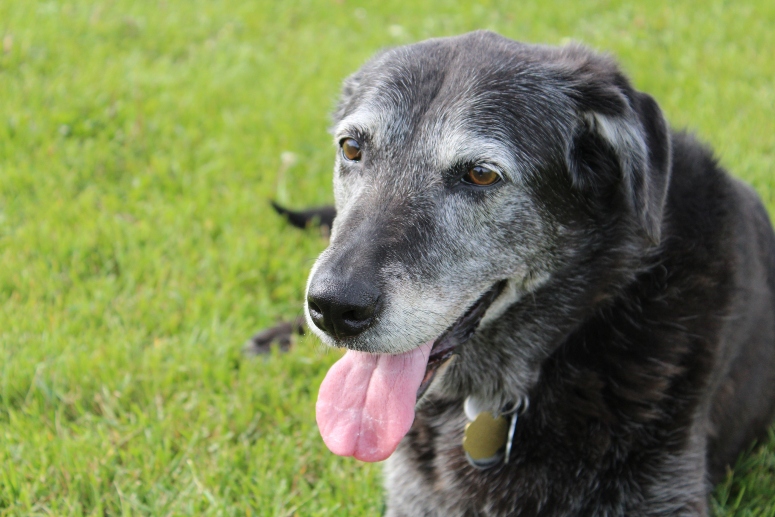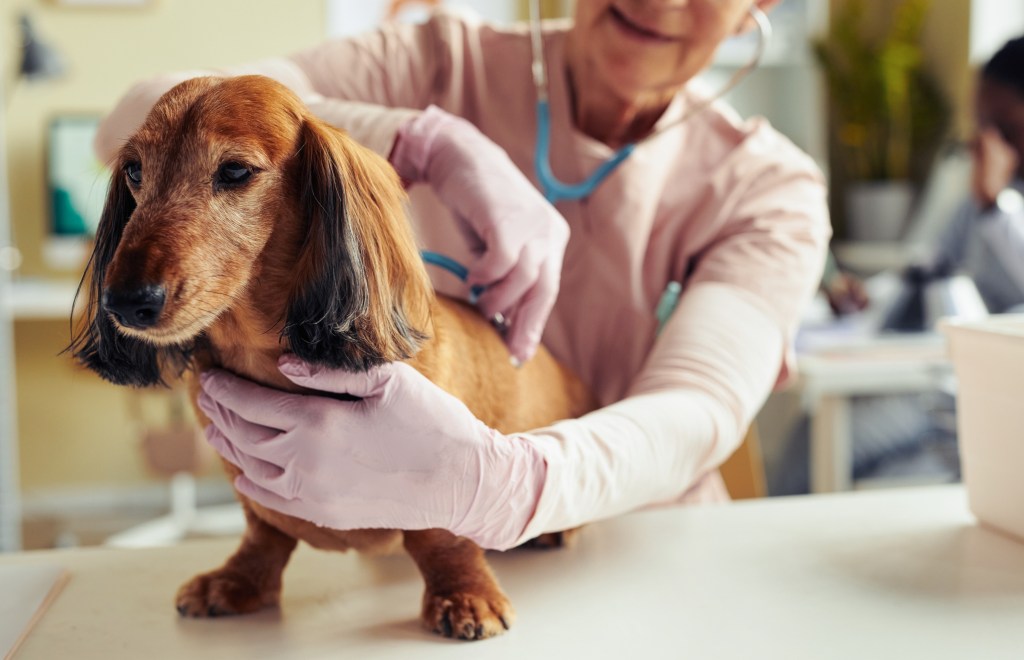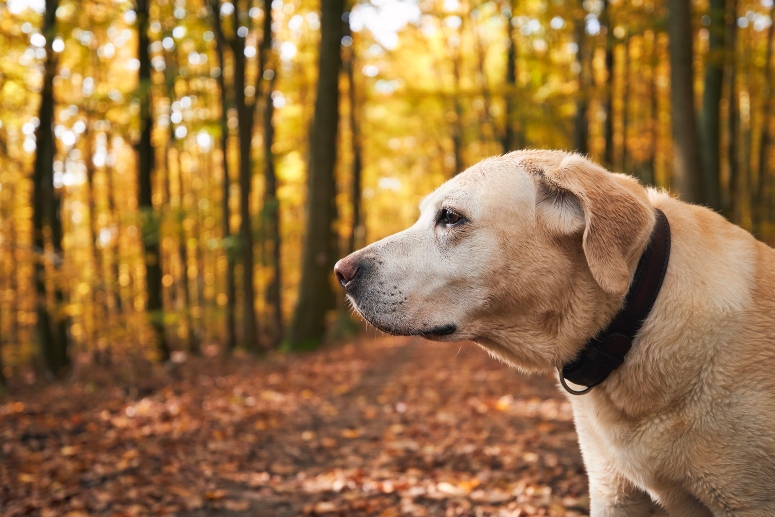Key Takeaways
- Once dogs reach their senior years – about 7-8 years for large dogs, and 11-12 years for smaller dogs – you will need to make some adjustments to keep them healthy and happy.
- Senior dogs will be less mobile, but you can keep them active with slow walks, swimming, and nose work.
- Older dogs may need a lower-calorie diet, supplements, and more frequent vet exams.
As dogs age, they often require lifestyle adjustments to keep them happy and healthy. As dogs enter their senior years, they tend to develop more health conditions and their nutritional needs change. Old age also comes with reduced mobility and pain when jumping or climbing stairs. All of this requires pet parents to keep a closer eye on their elderly dog, especially noting any changes in activity level, weight, or appetite.
When is a dog considered a senior?
Contrary to popular belief, figuring out your dog’s age in human years is more complicated than the commonly used rule of one year equaling seven years for dogs. In their first two years of life, dogs mature more quickly, which equals 10.5 human years, says VCA Hospitals. After that, a dog year roughly equals about four or five human years.
How quickly your dog ages also depends on their breed and size, as smaller dogs tend to live longer than large ones. You can use this chart to estimate your dog’s true age. Typically, large dogs are considered seniors at about 7-8 years old, while small dogs don’t hit that mark until 11-12 years.
You can help your senior dog age gracefully and healthily with the steps listed below:
1. Joint supplements for dogs
One of the best ways to prevent arthritis in dogs is by giving your senior dog a joint supplement. As dogs (and humans) age, the cartilage in joints begins to break down, leading to joint pain. One of the most popular supplements is glucosamine chondroitin, a natural substance that is the building blocks of cartilage. Other types of joint supplements for dogs may act by building muscle mass. Always check with your vet before starting a supplement to ensure the correct dosage and prevent any drug interactions. Veterinarians can recommend high-quality brands.
Glucosamine’s side effects are usually related to a shellfish allergy; many supplements contain shellfish, in which glucosamine naturally occurs. In rare cases, vomiting, diarrhea, constipation and appetite loss have been reported. The vast majority of senior dogs can use joint supplements throughout their lives with no side effects.
2. Low-impact activities for senior dogs
“Use it or lose it” applies to your pet’s joints. Even dogs with arthritis require daily exercise to maintain mobility. Try low-impact exercise to avoid putting stress on seniors’ joints while still getting their blood pumping. Work with your dog’s natural pace, whether running or walking. Hot Dog on a Leash recommends using hills to target your pup’s back or front leg muscles – depending on the incline – as muscle atrophy can occur from arthritis in dogs or lack of activity, especially in obese pets. Swimming is another excellent, low-impact exercise for dogs. Whether you build a dog swimming pool in your backyard or head to your local lake, doggy paddling is a cardiovascular workout that maintains muscles without the pounding or joint pain caused by walking. Another way to keep your dog’s joints moving is to do range of motion exercises. While your dog is lying down, gently bend and extend their legs one at a time in sets of five repetitions. Carefully turn your dog over and repeat.
Pay attention to your pet for signs of overexertion, like excessive panting or drooling, and avoid exercising in hot temperatures to prevent heat stroke in dogs. Winter weather can be rough on seniors’ joints; elderly pets are also more prone to hypothermia, so bundle your pup up before heading outside.

3. Senior dog food
Finding the best dog food for your pet’s age is essential. Senior dogs have different nutritional needs than puppies or even younger adult dogs. You should consider a dietary change usually around the age of seven or eight – depending on your dog’s size – as their lifestyle changes too. There are several ways senior dog food differs:
- Lower calories balance a less active lifestyle and avoid obesity
- High protein prevents muscle wasting, especially during weight loss.
- More antioxidants and omega-3 fatty acids to boost the immune system, which can be weak in senior pets.
If your pet has a chronic medical condition like arthritis, diabetes, constipation, or heart or kidney disease, they may require a special or prescription diet. Diabetic dog food is high in fiber, which delays glucose absorption into the bloodstream, preventing a dangerous post-meal blood sugar spike. Avoid bones or fatty treats, which also contribute to pet obesity; choose dog-approved vegetables like carrots, green beans, and sweet potatoes to serve as snacks. Consult with your veterinarian to design a meal plan for your dog’s specific condition and lifestyle.
4. Dog stairs and ramps
As pets age, mobility decreases. Senior dogs may be unable to jump on the couch or go up stairs as easily as they used to. Getting an elderly pet in the car can also be difficult, especially larger dogs who are awkward to lift. Dog stairs and ramps make getting from point A to B much easier for all involved. Be sure to select a product appropriate for your furniture’s height and your dog’s size. Many dog ramps for cars are collapsible or fold down for storage. Stairs for pets are available in various sizes and styles to match your décor.
Signs your dog might need some stairs or ramps include:
- Avoidance of difficult areas (stairways, couches, etc.)
- Difficulty sitting or standing
- Decreased activity level
- Hesitancy to jump or run
5. Twice a year vet exams

Senior dogs need to visit the vet more frequently — twice a year for checkups. VCA animal hospitals recommend every six months vet visits to detect and treat any medical conditions that may arise early. There are many medical conditions senior pets are more likely to develop, so your vet will conduct an exam and lab work specifically geared towards these and others:
Discussing your dog’s lifestyle changes with your vet is also important. Selecting a senior dog food, modifying exercise, and starting joint supplements should all be discussed with a veterinarian first. In some cases, the vet may perform a physical exam or blood work to rule out any pre-existing medical conditions that could be exacerbated or to prevent any drug interactions with existing conditions.
6. Mental exercises
Just like humans, senior dogs can become a little senile or develop doggie dementia as they age. Keeping your dog’s brain active throughout its life will help keep their cognitive ability sharp. Puzzle toys are one form of mental engagement that can be used when you’re away. Taking your pet into nature (hiking, paddling) can also be stimulating for the brain; the sights, sounds, and smells of the outdoors engage dogs’ natural instincts.
Obedience lessons for dogs can challenge seniors’ brains and even correct behavioral issues—who says you can’t teach an old dog new tricks? Just go easy on the treats and pick low-sodium and low-fat options.

7. Nose work for senior dogs
It’s common knowledge that a dog’s sense of smell is far stronger than a human’s—10,000 times more powerful. In the same way you enjoy listening to music or viewing a beautiful painting, your dog enjoys experiencing the world through their nose. As your dog ages beyond his young, spunky years, he may not be able to run as fast, jump as high, or take long walks as he used to, but one thing he still loves to do is use his nose.
Nose work is an excellent activity for dogs of all ages, but it can help keep senior dogs and those who aren’t as spry mentally and physically active. It’s a low-impact exercise that gets them off the couch and gets the gears in their brains turning. Though scent hounds like bloodhounds and basset hounds were bred for trailing scents, all dogs have powerful noses, and any dog—blind, deaf, young or old—can benefit from nose work.
Practicing nose work at home
Getting your dog involved in nose work is easy and only requires some dog treats. Using treats or toys that highly motivate your dog, simply hide them around your home, underneath or behind obstacles for your dog to find.
Another great tool for nose work is the snuffle mat. A snuffle mat consists of strips of fabric that mimic grass. You can hide treats between the strips for your dog to sniff out, bringing out your dog’s natural foraging instincts as he works to find each tasty reward. You can buy a snuffle mat or easily make your own if you’re a little crafty.
8. Massage
Yes—most dogs love massage just like people do. Take some time to give your elderly dog the special care and attention they deserve, focusing on rubbing muscles and joints. Daily massages improve circulation, reduce pain, facilitate healing and improve their range of motion. Finish up with a soothing bath to alleviate sore muscles. Some YouTube videos demonstrate how to massage a dog.
